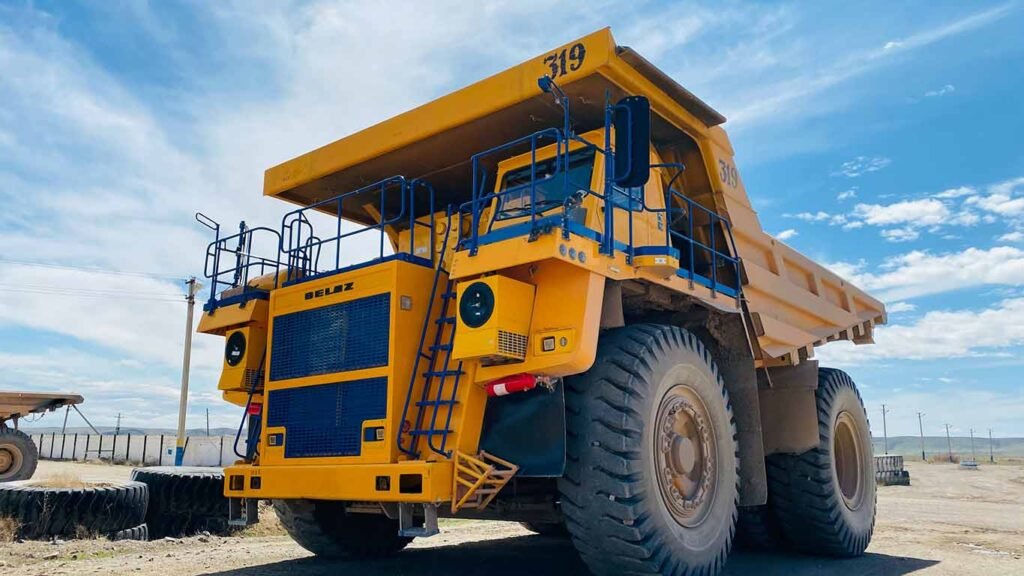Heavy haul trucks; machines that move huge loads in one of the most extreme terrains on Earth. Drivers put in long hours, sometimes during bleak weather conditions and across narrow haul roads and unforgiving terrain.
There are always risks in mining, and safety is now an even higher priority. Autonomous haulage systems (AHS) of mining haulage company are what fill the gap. Already, these self-driving trucks are at work in big operations around the world.
They’re more than a tech upgrade, though, and they’re doing very real work to make work sites safer — fewer accidents, shorter response times, and less time holding a Workers helmet out of the line of fire.
Takes Drivers Out Of Harmful Way
When you pull people out of trucks and put them into remote control rooms, you remove a massive layer of risk. No longer would you have to navigate through a cloud of dust or try to watch for another vehicle in the dark. And behind the wheel of 12-hour shifts, drivers are no longer contending with tiredness. That alone reduces crashes and near-misses.
Autonomous trucks don’t need naps or bathroom stops. They operate on pre-determined tracks and respond predictably to signals. No sudden swerving. No risky overtaking. Less traffic on the haul roads also reduces the risk of vehicles colliding with one another, or with ground crew.
At some mines, the operators now sit in climate-controlled cabs, overseeing trucks running on multiple feeds from cameras. They are safer, more focused. Instead of just responding to a road hazard, they are making smarter decisions with clearer data. This is a complete transfer of where the risk resides — and who bears it.
Better Control Of And Flow In Traffic
Human drivers — even most veterans, can’t always predict what or when something is happening, or match their behavior perfectly to the other, truck-driving and loading players. That unpredictability can result in bottlenecks, aggressive attempts and wasted time spent waiting for clearance.
They don’t just drive, they sync. Mining automation solutions maintain distance, control route timing and even speed, all through on-board systems. So, you don’t have to deal with those tight squeezes near dumps or when an oncoming vehicle tries to bully you to back off coming up a blind curve.
Less braking, less stopping, less hurrying through poor visibility or not having time to make an informed decision when traffic is free flowing. At one mine site in Western Australia, for example, traffic accidents were reduced by almost 80% following their introduction to key routes by AHS trucks.
Detects Hazards Faster
They are filled with sensors — lidar, radar, cameras — that perpetually scan for shifts. Even road textures, objects on the road, or any other change in terrain count there. People overlook things, especially after a long shift.
And there’s more to it than just stopping. These trucks can automatically reroute themselves if a planned path becomes unsafe. That should translate to fewer delays and less necessity to send people down to where the problem is to fix it.
The mining industry still has accidents, despite the best plans. But when they are, speed and clarity can make a huge difference. Automation can solve that as well.
Reduces Human Error
And, at the end of the day, most mining accidents still boil down to human error. A missed signal. A rushed maneuver. A miscommunication. The more you get the haulage process automated, the fewer of those out of the box.
The driverless haul truck will never deviate from the procedure. They don’t cheat or bend the rules to get ahead of the game. They do not skip check-ins or blow off alerts. When you bake the rules in, the rules get followed every time.
Whenever a truck stops abruptly or is damaged, the control center is immediately alerted. There’s no waiting for a radio call. Teams have a sense of what just happened, where it happened and whether it involved anyone within seconds.
Conclusion
And as mines become more autonomous, it’s not just how they operate those changes but who is at risk and how quickly help arrives when things go wrong.
These systems remove people from harm’s way, make traffic flow more safely, and spot dangers faster than any tired human. Mines that adopt them experience fewer accidents, fewer mistakes and much more oversight of their most perilous operations.
For a line of work that is all about moving tons of earth, a little more certainly helps a lot. And that is why it’s worthwhile to pay attention to AHS.



